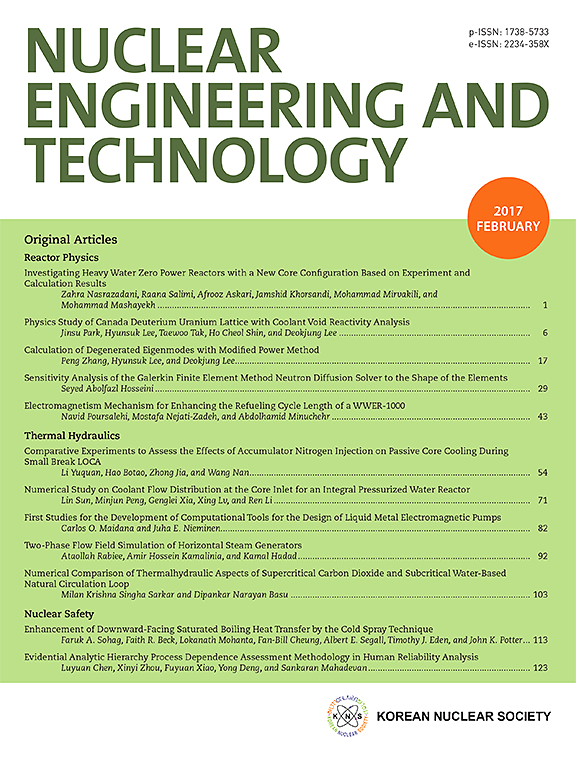巴勒斯坦使用的植物肥料放射性污染的测量
IF 2.6
3区 工程技术
Q1 NUCLEAR SCIENCE & TECHNOLOGY
引用次数: 0
摘要
集约化农业需要大量使用肥料,作为土壤的支持和强化来源,以提高其生产力。在这些肥料中,工业肥料是氮、磷和钾的重要来源。随着这类肥料使用量的增加,放射性元素污染环境的比例也在增加。本研究的目的是利用CR-39探测器估计常用蔬菜肥料样品中的放射性污染水平。分析不同类型肥料样品的氡和镭浓度是很重要的,因为它对纠正这些产品的消费和减少其副作用有影响。所有样本的氡和镭浓度平均值在119.0至570.4 Bq之间。m−3和13.5-72.1 Bq。kg−1,总平均值270.6 Bq。m−3和31.9 Bq。公斤−1,分别。为了评估这些样品的辐射危害,计算了这些样品的年有效剂量和呼出率。本研究中测量的活动水平形成了一个基线数据库,可作为后续研究的参考点,以显示即将发生的事件的影响。本文章由计算机程序翻译,如有差异,请以英文原文为准。
Measurement of radioactive contamination of plant fertilizers used in Palestine
Intensive agriculture requires extensive use of fertilizers as a supportive and fortifying source for the soil to increase its productivity. Among these fertilizers used are industrial fertilizers, which are an essential source of nitrogen, phosphorus and potassium. With the increased use of such types of fertilizers, the percentage of environmental pollution with radioactive elements increases. The current study aims to estimate the level of radioactive contamination in selected samples of commonly used vegetable fertilizers by using CR-39 detectors. The analysis of radon and radium concentrations for different types of fertilizer samples is important, because of its effects on correcting the consumption of these products and reducing their side effects. The average values of radon and radium concentration in all collected samples vary from 119.0 to 570.4 Bq.m−3 and 13.5–72.1 Bq.kg−1 with a total average values of 270.6 Bq.m−3 and 31.9 Bq.kg−1, respectively. To evaluate the radiological hazards, the annual effective dose and the exhalation rates in these samples were computed. The activity levels measured in this study form a baseline database that can be used as a point of reference for subsequent research to show the effects of upcoming occurrences.
求助全文
通过发布文献求助,成功后即可免费获取论文全文。
去求助
来源期刊

Nuclear Engineering and Technology
工程技术-核科学技术
CiteScore
4.80
自引率
7.40%
发文量
431
审稿时长
3.5 months
期刊介绍:
Nuclear Engineering and Technology (NET), an international journal of the Korean Nuclear Society (KNS), publishes peer-reviewed papers on original research, ideas and developments in all areas of the field of nuclear science and technology. NET bimonthly publishes original articles, reviews, and technical notes. The journal is listed in the Science Citation Index Expanded (SCIE) of Thomson Reuters.
NET covers all fields for peaceful utilization of nuclear energy and radiation as follows:
1) Reactor Physics
2) Thermal Hydraulics
3) Nuclear Safety
4) Nuclear I&C
5) Nuclear Physics, Fusion, and Laser Technology
6) Nuclear Fuel Cycle and Radioactive Waste Management
7) Nuclear Fuel and Reactor Materials
8) Radiation Application
9) Radiation Protection
10) Nuclear Structural Analysis and Plant Management & Maintenance
11) Nuclear Policy, Economics, and Human Resource Development
 求助内容:
求助内容: 应助结果提醒方式:
应助结果提醒方式:


